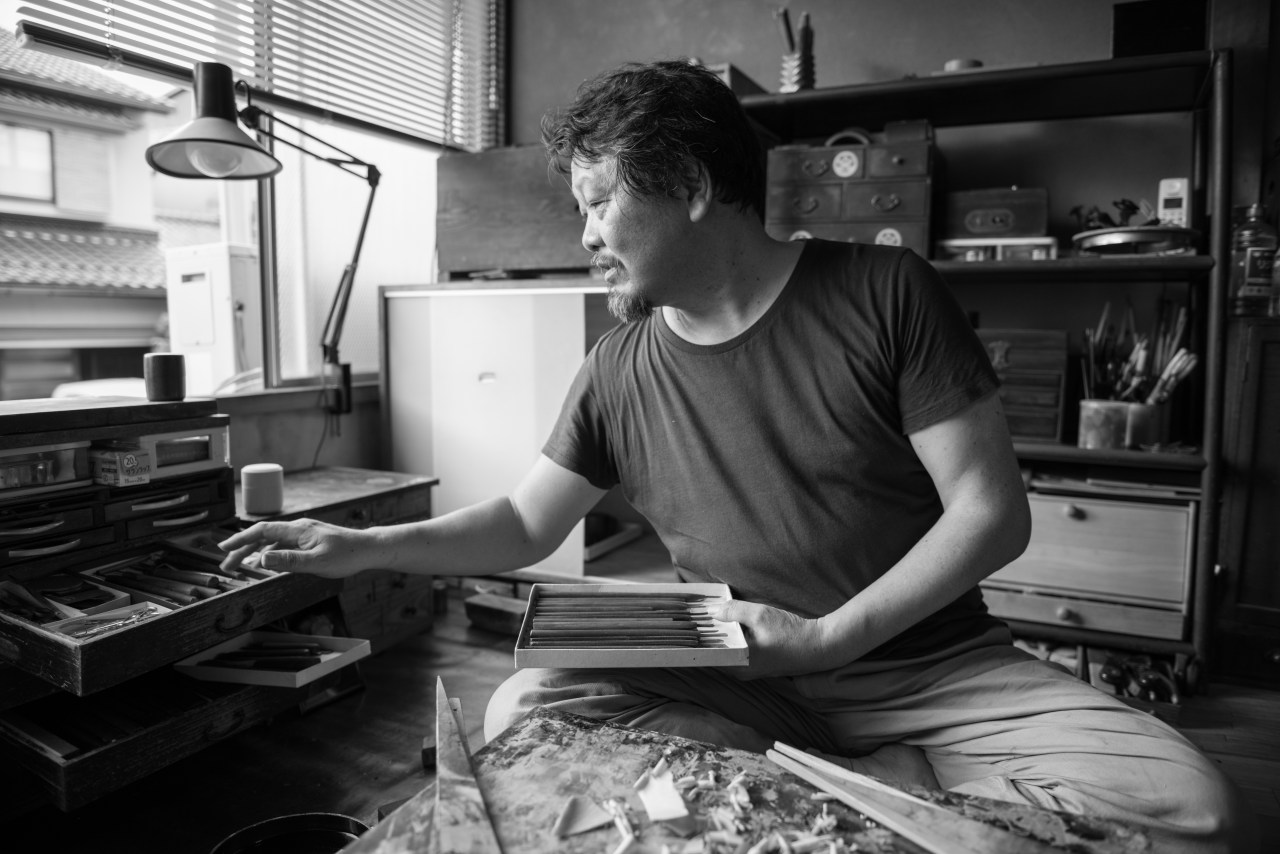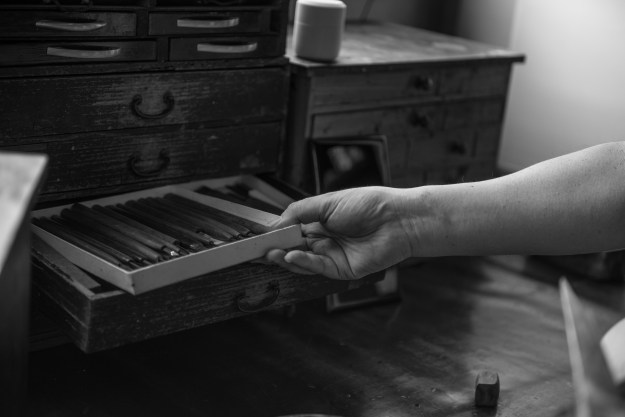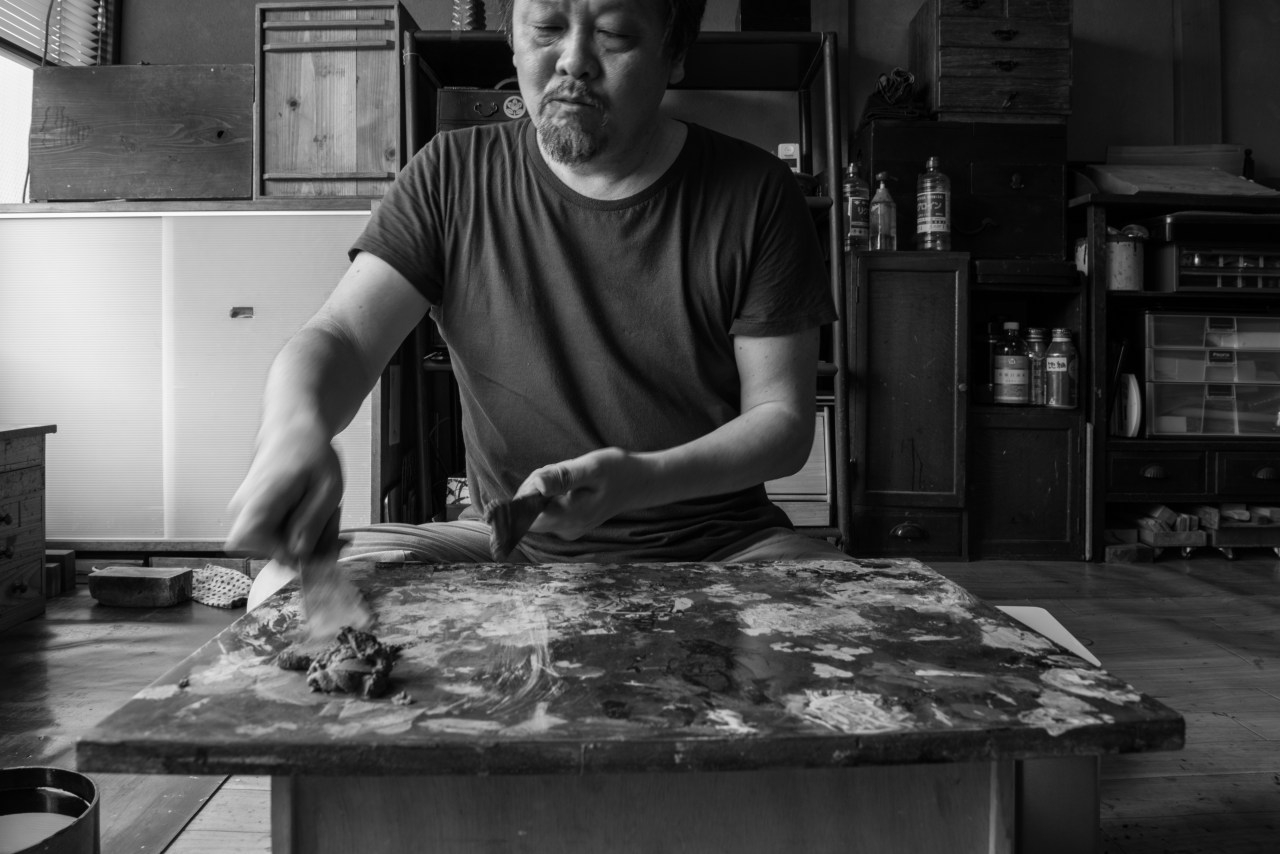Masaru Nishimura, also known by his artisan name of Nishimura Shoitsu III, believes there are two kinds of art. There is the art intentionally produced by people who call themselves artists, created to be displayed, admired, and collected. Then there is the art of pursuing an artistic life, focusing on not so much what one does but how. It’s attention to detail and taking time to create beauty in simple actions; it is, essentially, an approach to life long admired by the Japanese but one that in recent years has faded in the face of rampant consumerism.
Each day, Nishimura positions himself on his zabuton (floor cushion) and surrounds himself with the tools of his trade—fine brushes, spatulas, coal pieces for sanding and polishing, gold and silver powder, crushed bits of seashell (raden), eggshell, and other decorative materials, all stored neatly in individual packets.
His craft? Maki-e, the highly skilled art of applying gold, silver, or shell decorations to lacquered items such as boxes and trays. It’s a trade Nishimura was born into, following his father and grandfather before he apprenticed with the legendary artist Shogyo Oba. Maki-e is time-consuming: A single tea box can take as long as a decade to complete. Nishimura works in Kanazawa out of his home, an old, traditional Japanese house complete with a simple meditative garden. The roofline of the temple where his ancestors’ spirits reside peeks over the fence—a constant reminder of his place and his responsibilities.
From plain wooden objects, Nishimura fashions works of beauty, grace, elegance, and humor. He says his goal is to achieve the illusion of effortlessness so that viewers will relate to the objects on an emotional rather than technical level, drawn by the subtlety and not the labor. In this, as in everything, he succeeds.
This text was adapted from a profile earlier published to AJ Kanazawa.





